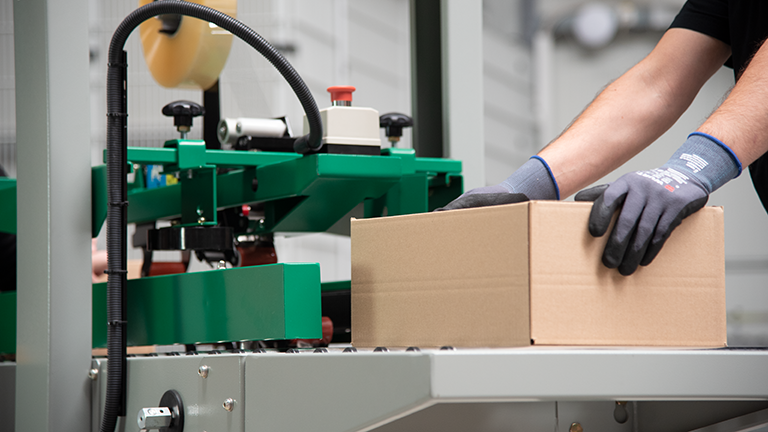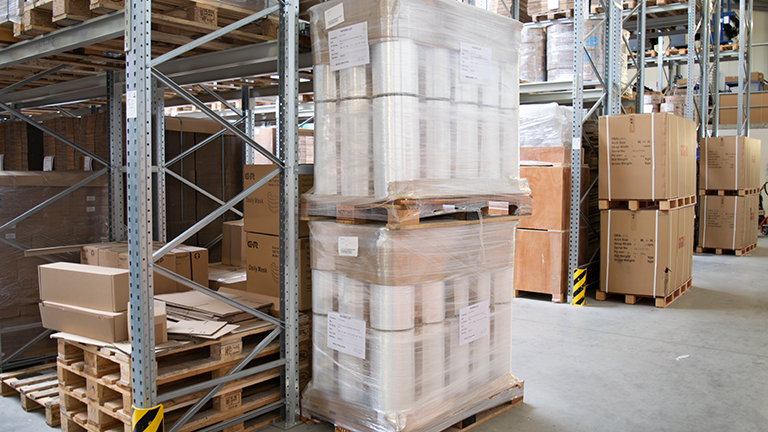One possibility for an ecological packaging solution is the so-called "downgauging". In the following, we would like to show you how you can reduce your packaging costs and act in an environmentally friendly way by reducing and simultaneously using more effective materials. The term "downgauging" essentially means using packaging that offers more performance with less material.
The goal is to achieve a significant reduction in packaging volume as well as subsequent waste. By using thinner films and lightweight cartons, the use of resources can be greatly reduced. The goal is to use as little material as possible without sacrificing the important functional and safety standards.

Established in the food industry
Especially in the food industry, the right packaging proves to be indispensable for the hygienic protection of sensitive goods. It protects its contents from external influences, ensures food safety and also ensures a long shelf life. Today's packaging materials already fulfil these important tasks using far less material than they did a few years ago. Downgauging has been established here for some time. Thanks to technical progress, it has been possible to produce packaging from ever thinner materials, while at the same time increasing the protective function. Especially in the area of film packaging, high-performance thin films were developed and replaced by the earlier thick and rigid films. This made it possible to reduce the amount of material used enormously.
Saving volume protects the environment
Besides the use of lower thicknesses of the material, there are other ways to save packaging material. For example, it is possible to reduce the overall size of the package in order to save unused volume. Another way to save material is to offer prescription refill solutions. The so-called refill packaging usually has lower functional requirements than the original product and can be offered in a much larger unit with more content. Customer loyalty can be actively supported in this way.
If you no longer have the possibility to further reduce material consumption without loss of function, it is additionally a good idea to exchange your current packaging materials for a more resource-friendly variant, insofar as product safety permits this. For example, it is often possible to exchange plastic for paper packaging or to choose a material combination of organic or recycled plastic.

Downgauging - also for shipping packaging
Material reduction is not only essential for product packaging. Downgauging is also an increasingly important topic in shipping packaging. The demand from consumers has increased enormously in recent years. With the renewal of the Packaging Act (VerpackG), the pressure on shippers to further optimise packaging and increase its recyclability has also increased strongly from the political side. Besides the aspect of sustainability, downgauging also makes sense for companies from an economic point of view. Even small savings in material ultimately reduce the expenditure for packaging materials.
In the area of stretch film, the amount of plastic required per securing with stretch film has been greatly reduced. With high-performance film, the stretchability is increased so much and also offers an increased holding force for the safe transport and storage of the goods. As a result, far less film needs to be used for the same protection. This also significantly reduces the amount of waste.
The overall use of resources can also be decisively reduced through the use of lightweight cardboard boxes. By using cardboard boxes that are reduced in weight and thickness, resources are reduced during production, transport weight can be saved and ultimately less waste is produced. This minimises the overall environmental impact and also saves costs.

Overcoming challenges
The reduction of packaging results in many advantages. However, reducing the weight and thickness of materials also poses certain challenges. Besides the ambition to create a sustainable packaging solution and reduce costs, the actual functionality of the packaging must not be neglected. Here, care must be taken not to create packaging that is ultimately too thin for the transport and protection of the goods. Otherwise, the actual sense of more sustainability could be lost, as insufficiently protected goods could be damaged during transport and would then have to be destroyed.
Another essential aspect of downgauging is to achieve a reduction in packaging material without losing the customer's subjective feeling of quality. The perceived quality of the packaging should therefore also always be taken into account from an economic point of view. Thus, the feeling of quality must always be paid just as much attention as the actual performance, so that your customer does not classify the packaging as inferior.
We have summarised for you important aspects to consider when deciding on downgauging:
Is the functionality of the packaging still guaranteed? Are all technical requirements met?
Does the packaging retain its attractive appearance?
Would the packaging be easier or harder to open after the change?
Will your customers notice the change? Could it happen that the customer associates the thinner packaging with inferior packaging?
Not sure how best to start downgauging your packaging? We would be happy to help you find the right packaging alternatives with less material consumption but the same performance. Our team will be happy to analyse your current status, develop environmental goals together with you and offer you the appropriate alternatives. Get advice now!